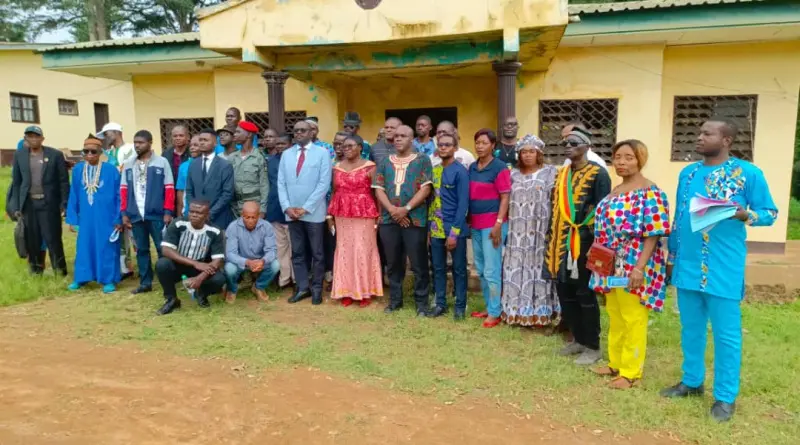This story was originally published on SourceUp.
The municipality of Ngoro has just signed an agreement with the Sustainable Development Initiative and its partners for the production of sustainable cocoa and the improvement of producers’ living conditions.
The commune of Ngoro in the department of Mbam and Kim, Centre region, wants to be emerging by 2030 according to its communal development plan. This emergence will be achieved through agricultural production, the main source of subsistence and income for its populations. Together with those of Ntui and Mbangassina, it is the force that makes Grand Mbam the leading cocoa production basin in Cameroon. These are the reasons that attracted IDH and the “Cocoa without deforestation” project in Ngoro : “The departments of Mbam, i.e. Mbam and Kim and Mbam and Inoubou, are the largest cocoa production basin in Cameroon. That is why this pilot area is the space in which all commitments are made. This is also where we find all the different buyers and exporters. IDH has co-financed two projects to the tune of 3.7 million euros covering the period 2023/2025 and the municipalities of Mbangassina, Ntui and Ngoro are the municipalities concerned,” says Christian INOUGA, IDH’s country representative.
This is the objective pursued by the Cameroonian government through the ” Deforestation-free cocoa” project with the support of the initiative for sustainable development, IDH and its partners. According to Joël Martin Atangana, the Project Manager, “70% of the cocoa produced in Cameroon is sold and consumed in the European Union. European Union regulations require that the production of this cocoa does not contribute to deforestation, that it respects people, that it is traceable and above all that it contributes to improving the living conditions of producers.” In addition, he adds: “When we look at the SND30, the department of Mbam and Kim, of which Ngoro is a part, is a strategic point to allow Cameroon to be self-sufficient in terms of food, to be able to generate income from the income of its producers.”
As in Ntui and Mbangassina, the signing of this memorandum of understanding adapted to the development plan of the commune of Ngoro will allow cocoa farmers and other farmers in the commune to benefit from financial and technical support for a better migration towards agroforestry and the application of better agricultural practices, agri-food and commercial crops of other crops.
The municipality of Ngoro thus completes the phase of agreements, the next step provides: “the development of costed strategies so that the various memoranda of understanding that have been signed lead to an action plan that will be accompanied by different indicators where the different actors will be able to self-evaluate, to implement the projects that have been defined, also to implement the various commitments that have been made at the national level“.
Cocoa in Cameroon is 400 billion CFA francs of foreign exchange generated per year, nearly 02 million indirect producers, 600,000 direct producers. The implementation of the ” Deforestation-free cocoa” initiative in the major production basins will significantly improve these figures.
This impact story is related to the Ngoro Landscape Initiative.
